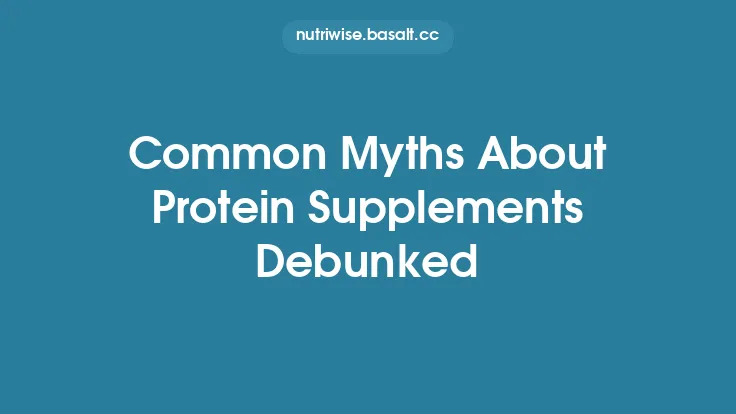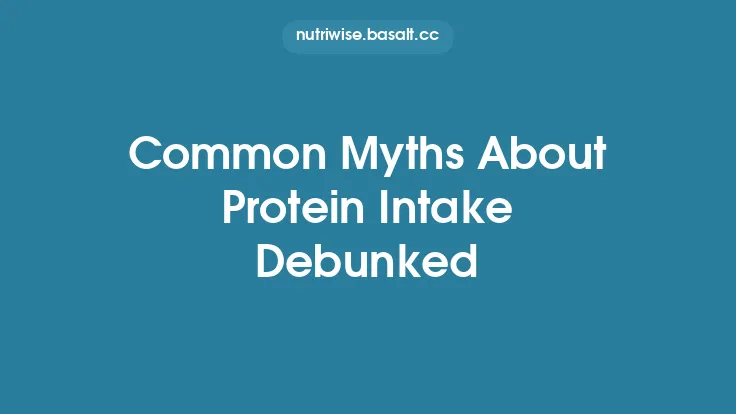Iron supplements are among the most widely used over‑the‑counter products, yet they are also surrounded by a cloud of misinformation. From well‑meaning friends to sensational headlines, many claims about iron pills are either exaggerated or outright false. Understanding what the science actually says can help you make safer, more effective choices—whether you’re looking to correct a deficiency, support athletic performance, or simply maintain optimal health.
Myth 1: “More Iron Is Always Better”
The reality: The body tightly regulates iron balance. When iron stores are sufficient, intestinal absorption drops dramatically, and excess iron is stored primarily as ferritin or hemosiderin. However, the regulatory mechanisms are not foolproof; chronic high‑dose supplementation can overwhelm them, leading to iron overload (hemachromatosis‑like states) even in individuals without a genetic predisposition. Elevated serum ferritin and transferrin saturation are early warning signs of toxicity, which can damage the liver, heart, pancreas, and joints over time.
Takeaway: Only supplement to the extent prescribed by a healthcare professional. Routine blood tests (serum ferritin, transferrin saturation, and complete blood count) should guide dosing, and periodic monitoring is essential to avoid accumulation.
Myth 2: “All Iron Supplements Are the Same”
The reality: Iron supplements come in several chemical forms, each with distinct absorption rates, side‑effect profiles, and dosing considerations:
| Form | Typical Elemental Iron (mg) per 325 mg tablet | Absorption Efficiency* | Common Side Effects |
|---|---|---|---|
| Ferrous sulfate | ~65 | 10–15 % | Constipation, nausea, dark stools |
| Ferrous gluconate | ~35 | 10–12 % | Generally milder GI upset |
| Ferrous fumarate | ~106 | 12–15 % | Similar to sulfate |
| Carbonyl iron | ~45 | 5–10 % | Lower GI irritation, slower release |
| Heme iron polypeptide | ~15 | 20–30 % | Minimal GI effects, more expensive |
\*Absorption percentages are approximate and can vary with individual physiology and concurrent food intake.
Takeaway: Choose a formulation that aligns with your tolerance and the prescribed elemental iron dose. For patients prone to gastrointestinal distress, a slower‑release or heme‑based product may be preferable, albeit at higher cost.
Myth 3: “Iron Supplements Have No Side Effects”
The reality: Gastrointestinal discomfort is the most common adverse effect, ranging from mild nausea to severe constipation or diarrhea. In rare cases, hypersensitivity reactions (rash, pruritus) can occur. High‑dose iron can also cause oxidative stress in the gut mucosa, potentially exacerbating inflammatory bowel conditions.
Takeaway: Start with the lowest effective dose, split the total daily dose into two or three administrations, and consider taking the supplement with a small amount of food if tolerated. If side effects persist, discuss alternative formulations or dosing schedules with your clinician.
Myth 4: “You Can Take Iron Supplements Anytime”
The reality: Iron absorption is pH‑dependent and competes with several dietary components. While the article avoids deep discussion of absorption mechanisms, it is important to note that certain timing strategies can improve efficacy and reduce side effects:
- Empty‑stomach dosing (30 minutes before meals) maximizes absorption for many individuals.
- Bedtime dosing can be useful for those who experience stomach upset with morning doses, provided the stomach is relatively empty.
- Avoid simultaneous intake of calcium‑rich foods, antacids, or high‑dose multivitamins containing zinc or copper, as they can impede iron uptake.
Takeaway: Tailor the timing to your personal tolerance and lifestyle, but maintain consistency to achieve steady iron repletion.
Myth 5: “Iron Supplements Cure Anemia Instantly”
The reality: Even with optimal dosing, the hematologic response to iron repletion follows a predictable timeline:
- First 1–2 weeks: Increase in reticulocyte count (young red blood cells) as the marrow ramps up production.
- Weeks 3–4: Rise in hemoglobin concentration, typically 1–2 g/dL per week.
- Weeks 6–12: Full restoration of iron stores (ferritin) and normalization of hemoglobin.
Patients with severe deficiency or concurrent chronic disease may experience a slower response. Moreover, if anemia is multifactorial (e.g., combined iron and vitamin B12 deficiency), iron alone will not resolve the condition.
Takeaway: Patience and follow‑up testing are crucial. Expect a gradual improvement rather than an immediate fix.
Myth 6: “Natural Iron Supplements Are Safer Than Synthetic”
The reality: “Natural” often refers to iron derived from plant or animal sources (e.g., iron‑rich algae, fermented foods). While these may contain additional nutrients, the elemental iron content is usually lower, and the bioavailability can be highly variable. Synthetic ferrous salts provide a precise, measurable dose, which is essential for therapeutic management.
Takeaway: Safety is determined by dose accuracy, monitoring, and individual tolerance—not by the label “natural.” If you prefer a natural source, discuss it with a healthcare provider to ensure it meets your therapeutic needs.
Myth 7: “Iron Overload Is Only a Concern for People Who Take Supplements”
The reality: While supplementation is a common cause of secondary iron overload, other sources exist:
- Repeated blood transfusions (e.g., in thalassemia or chronic anemia) can deposit iron rapidly.
- Excessive dietary iron is rare but possible in diets heavily reliant on iron‑fortified foods combined with high‑dose supplements.
- Genetic predisposition (heterozygous HFE mutations) can amplify the risk when supplements are taken.
Takeaway: Even modest supplemental doses can tip the balance in susceptible individuals. Screening for iron overload (serum ferritin, transferrin saturation) is advisable before initiating long‑term high‑dose therapy, especially in patients with a family history of hemochromatosis.
Myth 8: “Iron Supplements Interact With All Medications”
The reality: Iron does interact with several drug classes, but the scope is limited:
- Antibiotics: Tetracyclines and fluoroquinolones can chelate iron, reducing both drug and iron absorption.
- Thyroid hormones: Levothyroxine absorption may be impaired if taken concurrently.
- Antacids and PPIs: By raising gastric pH, they can diminish iron solubility and uptake.
Conversely, many common medications (e.g., antihypertensives, statins) have no clinically relevant interaction with iron.
Takeaway: Space iron supplementation at least 2–4 hours apart from the above agents. Always review your medication list with a pharmacist or physician when starting iron therapy.
Myth 9: “Pregnant Women Should Take High‑Dose Iron Without Testing”
The reality: Pregnancy increases iron requirements (≈27 mg/day in the second and third trimesters). However, universal high‑dose supplementation can lead to gastrointestinal distress and, in rare cases, oxidative stress affecting fetal development. Moreover, iron deficiency anemia in pregnancy is best confirmed by laboratory assessment (hemoglobin, ferritin) before initiating therapy.
Takeaway: Prenatal care protocols typically recommend a modest daily supplement (30–60 mg elemental iron) after confirming deficiency. Tailor the dose to the individual’s baseline status and monitor throughout gestation.
Myth 10: “Iron Supplements Are Unnecessary If You Eat a Balanced Diet”
The reality: A “balanced diet” can provide adequate iron for many, but several factors can impede utilization:
- Physiological states (menstruation, growth spurts, pregnancy) increase demand.
- Chronic conditions (inflammatory bowel disease, celiac disease) impair absorption.
- Dietary patterns (vegan or vegetarian diets) may lack sufficient heme iron, which is more readily utilized.
In such scenarios, dietary intake alone may not meet the body’s needs, and supplementation becomes a practical solution.
Takeaway: Evaluate personal risk factors and, if necessary, supplement under professional guidance rather than assuming diet alone suffices.
Bottom Line
Iron supplements are powerful tools when used correctly, but they are not a one‑size‑fits‑all remedy. Dispelling myths helps prevent misuse, reduces the risk of adverse effects, and ensures that individuals who truly need iron receive it in a safe, monitored manner. Always pair supplementation with appropriate laboratory testing, choose the formulation that aligns with your tolerance, and maintain open communication with your healthcare team. By doing so, you’ll harness the benefits of iron without falling prey to common misconceptions.





